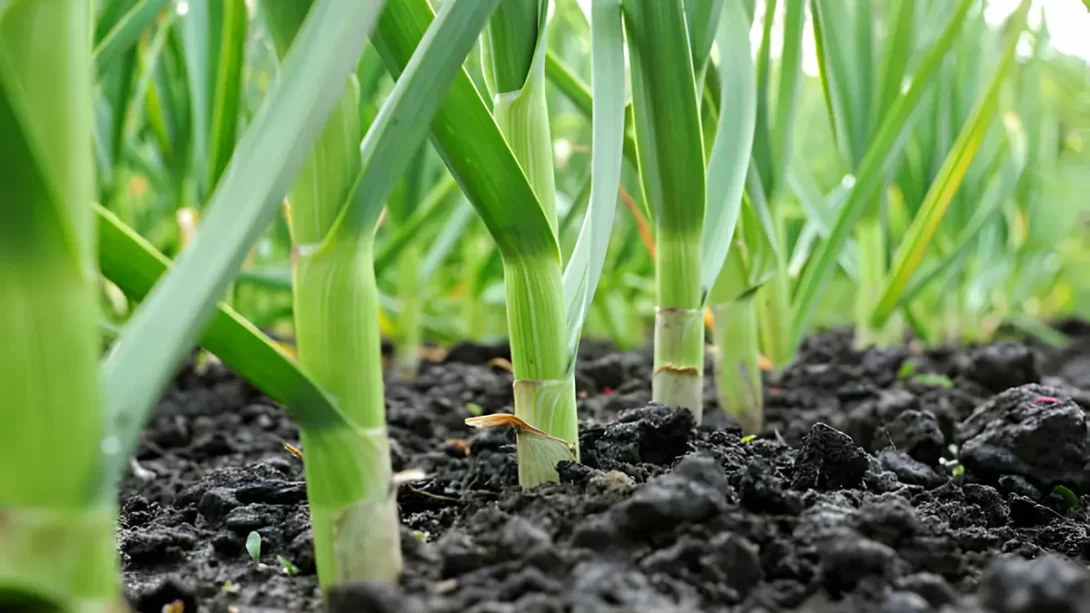Garlic, a staple in kitchens worldwide, is prized for its distinctive flavor and numerous health benefits. For gardeners, growing garlic can be a rewarding experience, but it requires understanding the right cultivation practices, particularly fertilization. This article aims to guide you through the optimal fertilization schedule for garlic, ensuring a robust and flavorful harvest.
The Garlic Growth Cycle
The growth cycle of garlic is key to determining its fertilization needs. Typically, garlic is planted in the fall and harvested the following summer. Its growth cycle includes:
- Planting Stage: Garlic cloves are planted in well-drained, fertile soil.
- Overwintering Stage: During the colder months, garlic roots develop but above-ground growth is minimal.
- Spring Resumption: Growth resumes vigorously in early spring.
- Bulbing Stage: In late spring to early summer, garlic begins forming bulbs, which is a critical phase for nutrient uptake.
Aligning fertilizer applications with these stages supports healthy growth and maximizes yield.
Types of Garlic
There are two main types of garlic, each with slightly different growing requirements:
- Hardneck Garlic: Known for its robust flavor and hard central stalk. It typically requires a cold period to thrive and may have specific fertilization needs to support robust growth.
- Softneck Garlic: More common in milder climates and generally has a longer shelf life. Softneck varieties might have differing nutrient requirements compared to hardneck types.
Understanding your garlic variety helps in tailoring the fertilization process for optimal growth.
Preparing Soil Before Planting
Proper soil preparation before planting garlic sets the foundation for a successful crop:
- Soil Testing: Conduct a soil test to determine nutrient levels and pH. Garlic prefers a neutral to slightly acidic pH.
- Amending Soil: Based on the soil test, amend the soil with compost or well-rotted manure to improve fertility and texture.
- Initial Fertilization: Apply a balanced fertilizer or one higher in nitrogen at planting to encourage strong root development.
Preparing the soil with the right nutrients ensures your garlic has a strong start, crucial for the development of robust bulbs.
When to Fertilize Garlic
Timing is crucial when it comes to fertilizing garlic. Here’s a breakdown of the key stages for fertilization:
- Initial Fertilization (At Planting in Fall): Apply a balanced fertilizer or one slightly higher in nitrogen when planting your garlic cloves. This initial feeding supports root growth throughout the winter.
- Early Spring Fertilization: As the ground thaws and growth resumes, typically in early spring, apply another round of fertilizer. This helps in kickstarting leaf growth, which is crucial for bulb development.
- Mid-Spring Fertilization: When the plants begin to form bulbs, usually observed by the increased leaf growth, apply a phosphorus-rich fertilizer to promote healthy bulb development.
Aligning fertilization with these growth stages ensures the garlic plants receive nutrients when they need them most for optimal growth and bulb formation.
Choosing the Right Fertilizer
Selecting an appropriate fertilizer can significantly impact the health and yield of your garlic plants:
- Balanced Fertilizers: A balanced 10-10-10 or 20-20-20 NPK (Nitrogen-Phosphorus-Potassium) fertilizer is often recommended for garlic. It provides a good mix of nutrients for overall plant health.
- High-Nitrogen Fertilizers: Early in the growing season, a high-nitrogen fertilizer can encourage vigorous leaf growth, which is vital for bulb development.
- Phosphorus-Rich Fertilizers: As the plant starts bulbing, switching to a fertilizer higher in phosphorus can promote larger and healthier bulbs.
- Organic Options: For organic gardens, well-rotted manure, compost, or organic fertilizer blends can be effective.
Choosing the right type and balance of fertilizer will support the different growth needs of garlic throughout its lifecycle.
Fertilization Techniques
Proper application of fertilizer is as important as the timing and type of fertilizer used:
- Side-Dressing: This involves applying fertilizer alongside the rows of garlic plants, gently incorporating it into the soil without disturbing the roots.
- Foliar Feeding: A diluted liquid fertilizer can be applied directly to the leaves. This is especially useful if the plants show signs of nutrient deficiency during the growing season.
Applying fertilizer correctly ensures that the nutrients are available to the garlic plants where and when they need them most.
Common Mistakes to Avoid
In the process of fertilizing garlic, there are several common pitfalls that gardeners should be aware of to ensure the health and productivity of their plants:
- Over-Fertilization: Adding too much fertilizer can lead to excessive leaf growth at the expense of bulb development. It can also cause nutrient burn, damaging the plants.
- Wrong Timing: Fertilizing too late in the season, especially with nitrogen-rich fertilizers, can delay the maturation of bulbs.
- Ignoring Soil Health: Overlooking the importance of soil testing and balance can lead to improper nutrient application. Soil health is a key factor in successful garlic growth.
- Neglecting Watering Needs: Fertilization should be accompanied by adequate watering to help dissolve and distribute nutrients in the soil.
Avoiding these mistakes will help in maintaining a healthy balance in the soil and ensure the effective utilization of nutrients by the garlic plants.
Monitoring and Adjusting Fertilization
Observation and adjustment are crucial components of an effective fertilization strategy:
- Monitoring Growth: Regularly observe your garlic plants for signs of nutrient deficiency or excess, such as yellowing leaves or stunted growth.
- Soil Testing: Periodic soil tests can help in adjusting your fertilization strategy based on the specific needs of your soil.
- Adjusting Practices: Be prepared to adjust your fertilization practices based on plant responses, weather conditions, and soil health.
By staying attentive to the needs of your garlic plants and being flexible in your approach, you can optimize their growth and yield.
Conclusion
Fertilizing garlic at the right times and with the appropriate products is essential for cultivating healthy, productive plants. By understanding the garlic growth cycle, choosing the right fertilizer, applying it correctly, and avoiding common mistakes, you can significantly enhance the quality and size of your garlic harvest. Remember, successful garlic fertilization is a balance of timing, quantity, and observation. With these guidelines in hand, gardeners can look forward to a bountiful garlic season, reaping the rewards of their careful planning and maintenance.



